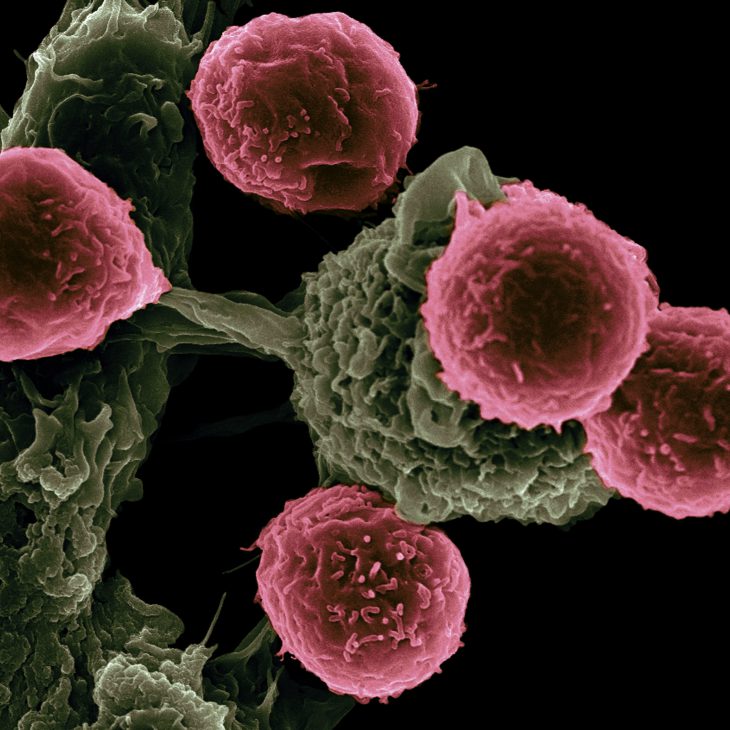Scientists from the H. Lee Moffitt Cancer Center and Research Institute are looking for a different treatment for patients with a type of lung cancer called non-small cell lung cancer, or NSCLC. They are specifically trying to treat NSCLC patients with metastatic cancer, meaning the cancer cells have spread beyond the original tumor. Treatments commonly used to treat other cancers, such as drugs called PD1 inhibitors, have failed to treat NSCLC adequately. Unfortunately, even when patients with metastatic NSCLC were treated with PD1 inhibitors and chemotherapy, within a year, their tumors started to grow again.
PD1 is a protein that is found on T cells. Tumor cells often have the corresponding PD-L1 protein on their surfaces. When these proteins come together, they dampen the immune response, keeping it under control. Inhibiting PD1 awakens the immune system, allowing it to fight the cancer. This makes the PD1 inhibitor treatment effective with other cancers.
But PD1 inhibitors have not been able to treat NSCLC quite as well as other cancers. This is because NSCLC tumors are “cold tumors,” meaning they do not trigger a strong immune response.
To get around this, the scientists are looking into a cell therapy called tumor-infiltrating lymphocytes. These cells, called TILs for short, are tested to see if they are effective for cases of NSCLC cold tumors that are resistant to other treatments. The therapy is done by taking out pieces of tumor, freeing its immune cells from their oppressive environment. Then, these cells are grown to higher levels in the lab than they could have in the body, and then infused back into the patient to fight the tumors.
The good news is, tumor-infiltrating lymphocytes have been successful in the past at finding cold tumors and activating the immune system to attack the tumors. Because of this, scientists think that it would be a good addition to the use of PD1 inhibitors, since both treatments are used to activate an immune response against the tumor.
Recently, the scientists from H. Lee Moffitt Cancer Center and Research Institute have completed a phase 1 trial using TILs with a PD1 inhibitor in NSCLC. A phase 1 trial is done to test the safety of a new treatment at different doses. This trial specifically tested how many patients responded to TIL treatment and how long the response lasted.
The trial enrolled 20 NSCLC patients who had metastases or inflammation; inflammation suggests that a tumor may spread in the future. The patients were first treated with a PD1 inhibitor and then TIL therapy.
The treatment appeared to have manageable side effects. The researchers found that the lymphocytes could spread out from most of the patient’s tumors and were capable of finding the tumors so that they could kill the cancer cells. Because of this, ninety-five percent of the patients saw a decrease in tumor size to the extent that surgery would not be needed to remove the tumor.
The results of this phase 1 trial suggest that patients who do not respond to the more common PD1 inhibitor treatment may find success with TIL therapy. The researchers say that the next step is a phase 2 trial, which is similar to a phase 1 trial but with a lot more people and a greater emphasis on the effectiveness of the treatment. These results also add to the list of treatment-resistant “cold tumor” cancers that might respond to TILs. This study demonstrated that tumor-infiltrating leukocyte therapy is effective against non-small cell lung cancer that has spread beyond the lung.


